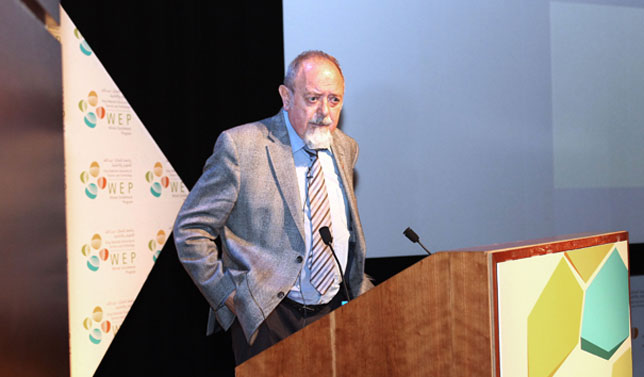WEP 2014: Dr. Ingo Potrykus — Golden Rice

Dr. Ingo Potrykus
"Lack of vitamin A is one of the world's biggest and most severe health problems," said Dr. Ingo Potrykus, co-inventor of Golden Rice, in his keynote lecture on the potentially life-saving technology at the King Abdullah University of Science and Technology (KAUST) 2014 Winter Enrichment Program (WEP 2014). "The social and economic costs are astronomic."
Golden Rice—a genetically modified crop engineered to deliver adequate vitamin A to hundreds of millions of people in the developing world—has been stalled for over a decade due to the difficulties in obtaining permits for the use of genetically modified organisms, or GMOs.
The Importance of Vitamin A
A study published by the World Health Organization in 1992 estimates that between 1.3 and 2.5 million children die every year because their diets, which often consist of rice and little else, lack an adequate source of vitamin A. An additional 250,000 to 500,000 children go blind each year for the same reason. Despite humanitarian efforts to provide vitamin-A-rich capsules to supplement the diets of those in need, the situation today remains dire. The problem stems from the fact that rice, the staple crop of over half of the world's population, lacks vitamin A almost entirely.
In the early 1990s Dr. Potrykus, together with Dr. Peter Beyer of the University of Freiburg, decided that through the application of the latest finds in genomics they could introduce vitamin A to the rice kernel, thus turning the problem of rice itself into a solution. After years of research exploring multiple options, in 1999 they found what they were looking for: Golden Rice. By splicing a small section of daffodil DNA into the rice plant's genome, they enabled rice kernels to produce beta carotene—the naturally occurring precursor to vitamin A that gives carrots, pumpkins, and yams their orange color. In the rice, the beta carotene gave each grain a distinctive golden hue.
The Acceptance of Golden Rice
"The entire technology is the seed," said Potrykus. Unlike most other genetically modified plants, Golden Rice was developed as a humanitarian project, with the intention of distributing the crops to farmers and allowing them to grow and breed it as they would with normal rice, and in the process, saving countless millions of lives.
But without the financial support of a large private company, Golden Rice has run into difficulties in clearing the regulatory hurdles set up for any new GMO. Steps towards obtaining the approvals to distribute Golden Rice have already increased the development costs of the project tenfold. More importantly, Potrykus said, with every year that Golden Rice is kept from farmer's fields, more and more people around the world suffer the effects of vitamin A deficiency.
"What is disappointing is that for none of these requirements is there scientific justification," he said. "The data from the trials is clear."
But Potrykus is hopeful. Golden Rice is currently undergoing large scale, carefully monitored human trials in the Philippines. He anticipates that positive results from these trials could eventually soften regulations and silence opponents to the project. "I think this has a future."
Please enable JavaScript to view the comments powered by Disqus. comments powered by Disqus
